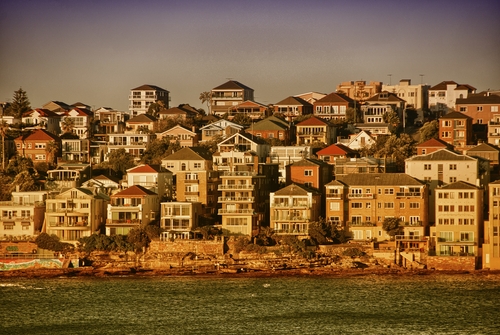
The man who has styled New Zealand as the "rockstar" economy of 2014 is still adamant there's no housing bubble in Australia despite strongly rising prices across the Tasman and he rules out the need there for "macro-prudential tools" of the type now being employed here through the LVR limits.
HSBC's chief economist for Australia and New Zealand Paul Bloxham has long argued that there's no housing bubble in Australia. And he's sticking to that in a new HSBC global research paper.
"...Just because prices are rising [in Australia], does not mean there is a bubble. Indeed, the recent increase in prices is roughly in line with what should be expected, given that mortgage rates are at 50 year lows. It is also largely by design, with the [Reserve Bank of Australia] seeking to rebalance growth, partly by lifting the housing market," he said.
In Australia housing prices have risen by 11% over the past year and by 16% since their trough in May 2012, Bloxham said.
"Importantly, this follows a decline of -8% in the 18 months to May 2012, so they are actually only +7% higher than their most recent peak. Perhaps more tellingly, they have grown by only +4.5% a year, on average, in the past five years and this is the same as their average over the past decade," he said.
In New Zealand, house price inflation as measured by the Real Estate Institute's Stratified Price Index got as high as 9.9% in October last year, the same month that the Reserve Bank here introduced 'speed limits' on high loan-to-value lending, one of the RBNZ's new 'macro-prudential tools'. The property market has slowed since the introduction of LVRS, with February's REINZ figures showing that national house price inflation had slowed to 8.2%. Median prices nationally were up 8.6% on those for February 2013 and 25.75% up in the past five years.
But Bloxham said HSBC saw it as "hghly unlikely" Australia's central bank would introduce macro-prudential tools to manage Australia’s housing boom.
"Indeed, recent published internal work from the RBA sees a senior official from the RBA quoted as suggesting that these sorts of tools are a ‘state of mind’ – that is, they ought to be unnecessary if prudential regulation is already working as it should.
"In short, the RBA’s approach seems to be that, if you get your micro-prudential settings right and you get your interest rate settings right, you don’t need macro-prudential tools," he said.
Bloxham said it was important that credit growth in Australia had, so far, been only modest.
"If there was one lesson from the global financial crisis and its forebears, it is that: it’s the leverage that matters! Nonetheless, interest rates may soon have to rise, to prevent excess exuberance entering the market."
He said the rate of house price growth in Australia had been in line with growth in household disposable incomes.
"Bottom line is: housing prices are now rising after having fallen - so the upswing in this cycle looks quite normal at this stage.
"Nonetheless, they are rising and this has prompted some commentators to (once again) suggest that there could be a danger that the housing market becomes overly exuberant and that Australia could see a destructive housing price fall.
"As yet, we do not share this concern. Indeed, we have long had the view that Australia does not have a housing bubble and this view has not changed."
The arguments for this were grounded in both a view on demand and supply of actual housing and for housing finance.
On housing supply and demand, available estimates still suggested Australia had an undersupply rather than an oversupply of housing.
"Here is the basic arithmetic. Population growth is currently 400,000 people a year and the average household size is around 2.5 persons a household. So, to meet new population demand we would need to be building at least 160,000 dwellings, and probably more like 175,000 dwellings, if around 10% are built to replace demolished buildings. But last year there were only 148,000 dwellings built.
"Doing the same arithmetic over the past five years implies a cumulative shortfall of housing.
"New population demand has been for around 825,000 dwellings but only 760,000 houses have been built in the past five years. Unlike Spain and the US before the global financial crisis, Australia has an undersupply of housing, not an oversupply."
On finance, Bloxham said while household debt was fairly high in Australia, most of the debt is held by households that can afford to continue to service it "as we have long argued". Almost 75% of household debt is held by the top 40% of income earners.
But he said with the broader Australian economy rebalancing away from mining investment-led growth, towards the domestic economy; inflation already passed its trough; and, early signs that the labour market is improving, the RBA may soon decide it has little reason to keep its cash rate at its current historical low level.
"Again this would be a normal response to a cycle in the economy, with the RBA not typically leaving its cash rate at very low levels for a long time. We expect the RBA to lift rates before the end of the year, a little ahead of current market pricing.
"Of course, the mere expectation of higher interest rates would start to help to manage the current housing boom.
"A shift in the RBA's stance from neutral to a mild tightening bias, if it were in arrive in coming months, could help temper the current housing boom."

We welcome your comments below. If you are not already registered, please register to comment
Remember we welcome robust, respectful and insightful debate. We don't welcome abusive or defamatory comments and will de-register those repeatedly making such comments. Our current comment policy is here.